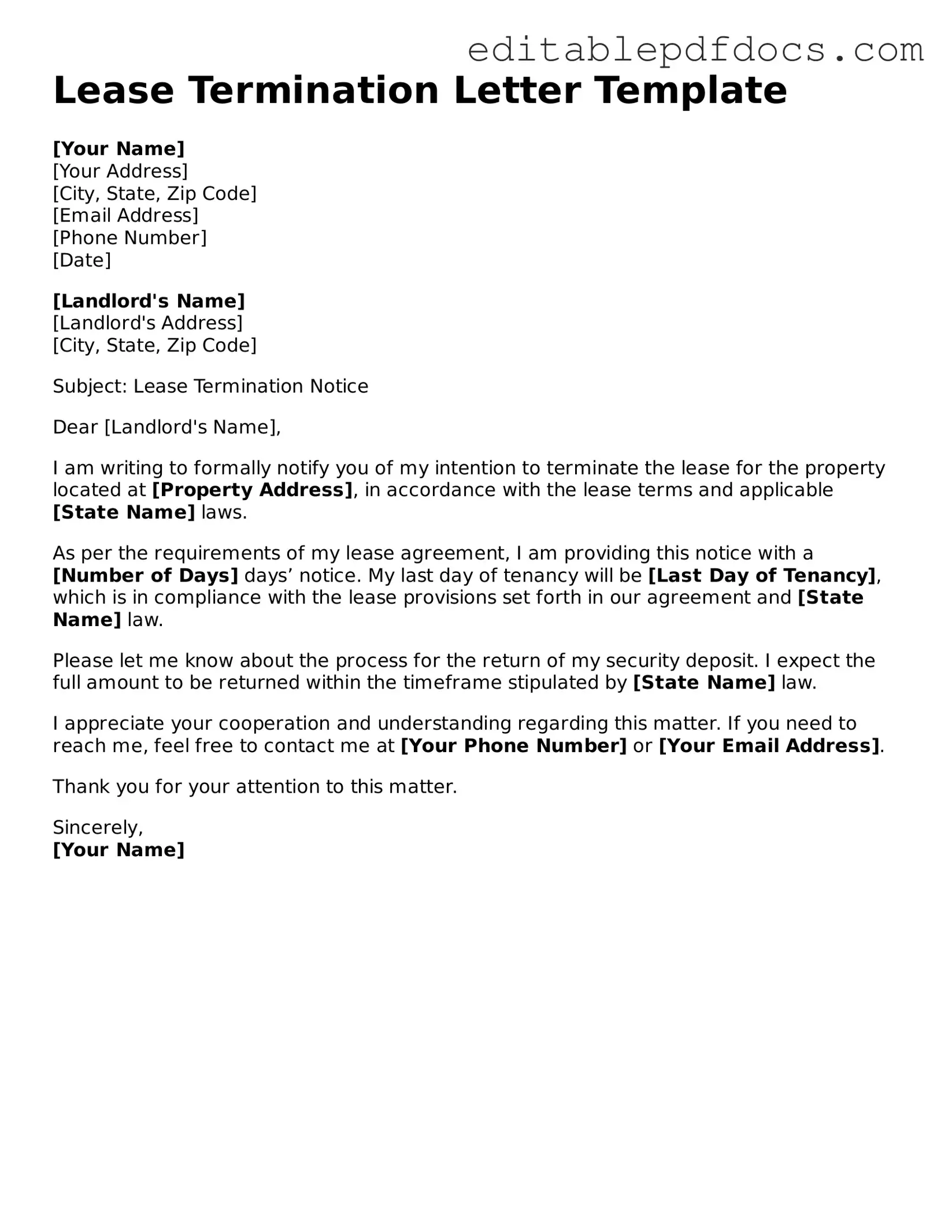Free Lease Termination Letter Document
A Lease Termination Letter is a formal document used by tenants or landlords to notify the other party of their intention to end a lease agreement. This letter outlines the reasons for termination, provides necessary details, and ensures that both parties are on the same page regarding the end of the rental arrangement. To facilitate a smooth transition, it’s essential to fill out the form accurately; click the button below to get started.
Open Editor Now
